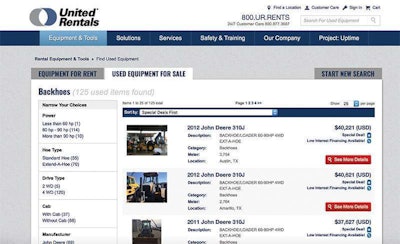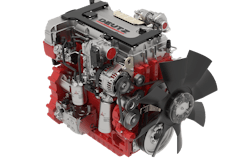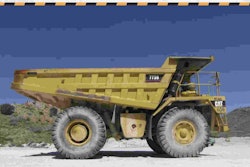 Used equipment has a prominent spot on the United Rentals’ website.
Used equipment has a prominent spot on the United Rentals’ website.This is Part 5 of a five-part series on used equipment. Click here to see the other parts of the series. Click here to download the full version of the Used Equipment Report.
United Rentals is the definition of a large fleet: The company rents out about 3,200 classes of heavy equipment with a total original cost of $9.8 billion.
With such a massive fleet, how does the company stay on top of equipment disposal? Specifically, how long does the company keep a piece of equipment, and when it’s time, what avenues does it follow to dispose of it?
As we learned in a conversation with Ted Grace, vice president, investor relations, it’s an intricate process, and United takes it seriously.
“We have nearly $10 billion in original equipment cost and 450,000 discrete pieces of equipment,” Grace explains. “So we base everything on a rental useful-life model.”
Grace says this model gives the company an expectation for the life span of a machine based on the amount of time United owns the asset “relative to the amount of capital we can get from it.”
But it’s not just the age of the machine that’s figured into its overall usefulness. “Age is just a number. It’s the hours of operation that affect its useful life,” Grace says. “Some assets we may keep three years, some we keep 10. It averages out to about seven years.”
For instance, Grace says the company keeps aerial machines longer than other types of equipment, while the turnover period with earthmoving machines is relatively short.
“Part of it is repair and maintenance cost,” he explains. “There’s a depreciation curve for the rate at which fair market value of the asset declines relative to the original cost.” Reliability data is also added to the mix. “And because we are extremely data intensive, we know more about our equipment than anybody. From all of these different perspectives, we look at when is the ideal time to sell it so that our economics are optimized.”
Once a machine has reached the end of its useful life, United chooses one of four avenues of parting ways with it:
- Retail sale
- Trade packages with manufacturers
- Wholesalers
- Auctions
United is not particularly keen on auctions. “You end up paying the auctioneer 10 to 12 points off the top,” Grace says. “For each dollar you think you’re getting, you’re actually only getting 88 to 89 cents. And since we have alternatives, that affects the calculus we use to figure out how to sell used equipment.”
United also engages in trade packages with certain manufacturers. In exchange for used machines, these manufacturers give United credits toward future machine purchases. Grace says the manufacturers typically take those used machines, rebuild them and re-sell them as certified re-
manufactured equipment.
But using United’s sales staff to sell a used machine to one of its customers is by far the company’s preferred method of disposal, Grace says.
“A lot of our customers buy and rent from us, and it’s just part of their business,” he says. “Our salespeople know their customers, and they know what they need.”
But there are other considerations at play as well, Grace says. “Let’s say we have an 80-foot boom we paid $100,000 for, and we’re hoping to get 50 cents back on the dollar. We’re going to have a salesperson spend some amount of time trying to sell that to one of our customers,” he explains. “But a chainsaw that cost us $500? Our salesperson’s time is not well spent on a low-cost item like that. So that affects how we think about channel mix.”
Download the entire Used Equipment Report
Part 1: Regional demands drive used prices
Part 2: Buying? Selling? Here are some contractor-honed strategies
Part 3: Lenders — Plenty of credit available for used-equipment buyers
Part 4: Used vocational trucks may not remain a buyer’s market for long
Part 5: How does the No. 1 rental firm dispose of its equipment?












